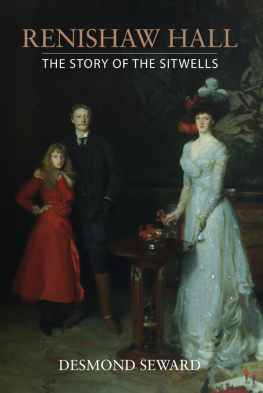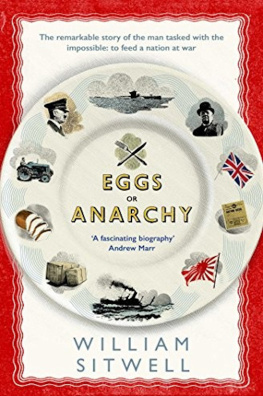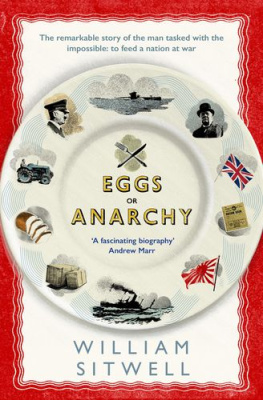THE NETHERLANDS
A Study of some aspects of
Art, Costume and Social Life
By
SACHEVERELL SITWELL

IN MEMORY OF
VIOLET GORDON-WOODHOUSE
WHO LOVED HOLLAND, AND WHOSE GENIUS
FOR MUSIC BROUGHT THE MUSIC OF THE
PAST ALIVE
Contents
The Netherlands
I
Introduction
It would be a happy opening to this book upon The Netherlands to describe how I found myself, one February morning in the middle of the war, safe and sound in Rosyth harbour, come up from Portsmouth in convoy, upon first one and then another destroyer of the Hunt class, belonging to the British Navy. Having the honour to be received an hour or two later by the British Admiral in charge, he asked me if I had noticed the pair of destroyers of The Royal Netherlands Navy berthed alongside, and then proceeded to tell me of the gallantry of their officers and crews, and of how he could rely upon them in all circumstances to do their duty. In his opinion, as sailors and mariners, they were second to none, and he spoke of the glories of their naval history and their great commanders. It is in this spirit that we would begin a book treating of Holland and the Dutchmen, for it has to be, above all else, a tribute to their sturdy independence. The very soil of their country is, in large part, due solely to their industry, and such being the case, since they are in a literal sense creators of their native land, their devotion and patriotism have ceased to be legendary and are become a living fact. It stirs the blood, when in Holland, to be told the stories of their brave resistance, and to see still painted upon the house walls the slogans conveying the thanks of the Dutch population to the United States and British airmen. It is touching to travel in a land where to be known for an Englishman means that every door is open to you, and that strangers will come up in the street and take your hand. No book written in English, and dealing with Holland in these tragic times, can begin without acknowledgment of these many acts of friendship. Perhaps this spirit of gratitude and affection is best expressed in the drawing on the cover of the little guide book to the Frisian Museum in Leeuwarden, which shows a Canadian and a Dutch soldier, and in between them the crowned lions of Holland. Many, many were the Dutchmen, known and unknown to me, who said that were it not for England, during that fearful year of 1940, Holland, and the rest of Europe, would have gone down, irrecoverably, not to rise again.
Always, I can only imagine, behind the minds of Dutchmen there must be the memory of the terrible struggles by which they won their independence from the Spaniards. That time is not so remote from them, historically. It is but a generation earlier in date than many of the old houses in most of their old towns. And it was followed, immediately, by their golden age. But, in the meantime, the Flemish-speaking portions of the Low Countries relapsed into somnolence. The natives of Flanders were not to distinguish themselves as scientists or explorers. Pieter Breughel, Peter Paul Rubens, were the last great Flemings. But it is necessary to realize that Holland, like Belgium, is an old and essential part of Europe. Flanders, a half of the ancient and vanished Duchy of Burgundy, was a great medival centre of culture and of civilization. Its painters and tapestry weavers were among the greatest artists of Western Europe. Its great cities were Brussels and Antwerp, Bruges and Ghent. But the Dutch towns, which succeeded to these, were not content to be merchants for all Europe. Having flung back the Spaniards they sailed forth upon the seven seas. They followed, more particularly, in the track of Portugal, doubling the Cape of Good Hope to the Indies and crossing the South Atlantic to Brazil. Had it been a few years later, the Dutch and not the Spaniards might have been the conquerors of Mexico and Peru. We only recall, here, their discovery of Australia and New Zealand, in order to reflect that these intrepid explorers and mariners, like the burghers of Cape Colony, of Surat and Batavia, like the spice merchants of Ceylon and the Moluccas, came from a handful of small Dutch towns.
During the seventeenth century there can be little doubt that Amsterdam was the richest and most prosperous of European towns. Its rich citizens were merchants, as they were bankers in the century following. But perhaps the greatest single factors in the Dutch good fortune were William the Silent and his great-nephew, known to ourselves as William III, the two heroes of the House of Orange, the one by his patriotic example, and the other for his military genius which kept the French at bay. Their collateral, or remote descendant, Queen Wilhelmina, has been not unworthy of them, and is the living historical link that holds the Dutch together. For their innate conservatism is, probably, the strongest trait in their national character. The Dutch, however, are not reactionary. They are unchanging, which is something different. They cling to their old habits. It is not only because of their waterways and love of kite-flying, because of the pagoda eaves of their bell towers and the sails showing, mysteriously, above the house roofs, that some, not even distant parts of Holland, may remind us of Confucian China. The strongly marked character of the Dutch, it is certain, makes them unlike any other race in Europe. It must be this strength of individuality that defies the laws of nature, and turns one of the smallest into, apparently, one of the most widely extended of European lands. Not, of course, if you fly across it in an aeroplane, but by motor car the polders can seem as lost and endless as the steppes or the prairies. Holland has a static tempo, all its own at all seasons of the year; in the rain (which is not unfrequent), at high summer, or at its most typical when the canals are frozen. And the Dutch painters have made their contribution to this static condition in their quiet interiors and still life paintings.
It is a fact that the majority of books on Holland have been over-weighted with descriptions of Dutch pictures, pages which must amount to a solecism in themselves because all Dutch painters, except Rembrandt, set out to narrate or describe, and not create. Their authors, more often than not, would seem to have visited Holland during the rainy season and stayed indoors, in the museums. They have seen the flower markets, and the cheese markets, but only in between the showers. They have entered the churches, but found the interiors bare and all alike. But Holland, which, as a country, is as individual as Russia or as Spain, calls for more careful treatment. And, in the first place, it has been our endeavour to get out of the museums into the open airout of the museums and, likewise, away from the great cities, not without having entered, meanwhile, some of the old and forgotten patrician houses of The Hague and Amsterdam. There must be others, besides the writer, to whom these are more interesting than the paintings in the Rijksmuseum. The wooden ships models, even the unique and peculiar barrel organs playing on the canal banks, tell us as much of Holland as the canvases by minor painters.
If we would have a vision of the Dutchmen in their golden prime we must see the small old towns, like Hoorn (72) or Enkhuizen (p. 65), remembering that from those now lonely quays, or their like, ships set sail for Surinam and Curaao in the West Indies, for the lonely and frightful Jan Mayen and for Nova Zembla, for Greenland and down the long coast to what is now New York, for the turtle islands of the South Atlantic, and round The Cape to the fabled Indies, regions that the Netherlands East India Company kept secret, as far as possible, thereby adding to the romance and mystery. The Dutch, it must be realized, had no colonial possessions nearer than several thousand miles distance, or many months voyage; they had no Algeria across the Mediterranean, no Madeira in the North Atlantic, but a week or two away. The nearest of their colonies was probably New Amsterdam, which is now New York, while Java, the richest of their settlements, was some ten thousand miles away. It is six or seven weeks sail, even now, by fast steamer, to New Zealand, which was the far limit of their explorations. The Japan trade, by which they were much influenced, sthetically, was their entire monopoly for two centuries. Every old lacquer box, every old saucer of Japanese porcelain in English country houses, came from that small islet of Deshima in the Bay of Nagasaki, to which the Dutch merchants were confined in humiliating but comical conditions from 1641 to 1858, a mudbank 600 ft. long by 240 ft. broad, and only 6 ft. above high tide, upon which sixteen to twenty Dutchmen were allowed to live and carry on their trade. In contrast, we would cite the splendid old Dutch buildings at Batavia and at The Cape, the latter being of particular interest because it has become the vernacular of the Union of South Africa and is the most promising of all colonial styles. The whitewashed walls and curving gables of the farmsteads, the shade of vine and bougainvillea, are in addition to the Dutchmens houses as we know them at Haarlem or at Amsterdam. The Cape style has produced such delightful, if lesser, masterpieces as the pediment to the wine cellar at Groot Constantia, a sculpture of







